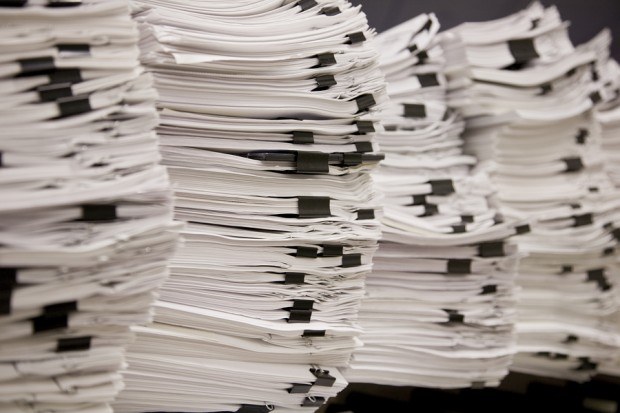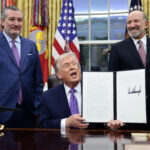Increasing litigation is adding to rate hikes in auto insurance coverage, according to a new report by the Insurance Information Institute (Triple-I).
The excessive litigation has compounded the problem of rising auto insurance costs, Triple-I said, and created a new asset class of investors that bet on the lawsuits.
Insurers paid out more than $1.10 for every $1 in premium they collected last year, according to the brief.
The report, “State of the Risk”, examines tactics used to initiate more lawsuits in order to “drive up a defendant’s litigation expenses and settlement payouts, and to secure outsized monetary awards after jury verdicts.”
Aggressive marketing and advertising techniques are often used to attract potential plaintiffs, the issues brief stated.
“There are real costs behind what we all know and see plaguing our roads with promises of settlement dollars, as billboard attorneys are racking up fees, and consumers are found to be getting less and less. The price of insurance is the effect, not the cause of risk, and there must be more work done to curb legal system abuse, as auto insurers – both personal and commercial – are seeing significant increases in claims costs when attorneys enter into the picture,” stated Sean Kevelighan, CEO, Triple-I. “What’s more, there are multimillions of dark money investor dollars entering into the fray to try and get their share. Some of these investors are sovereign funds, which may very well pose increased national security risks.”
Third-party litigation funding (TPLF), now a multibillion-dollar global industry where hedge funds and other financiers invest in lawsuits in exchange for a percentage of any settlement or judgment, allows plaintiff’s attorneys to finance more litigation through dark money, the Triple-I added.
Few states, besides Montana or Indiana, require the disclosure of a third-party litigation funder’s involvement in a civil lawsuit, the report noted.
The lack of transparency makes it difficult to hold plaintiff attorneys and their clients accountable to good faith standards, the issues brief explained.
“We’re seeing publicly traded and private third-party litigation funders getting more than 20 percent in investment yield. Where else can you get that kind of return,”said Dale Porfilio, FCAS, MAAA, chief insurance officer, Triple-I.
Certain states highlight the litigious environment driving up insurance costs.
Legal system abuse in Louisiana costs every resident more than $1,100 annually, according to an analysis by the American Tort Reform Association (ATRA), Triple-I said.
The state’s litigation environment was also cited by the Insurance Research Council (IRC) when reporting how Louisiana is the least affordable U.S. state for both personal auto and homeowners insurance.
Florida accounts for an annual average of nearly 71 percent of the nation’s homeowners’ insurance lawsuits, yet only 15 percent of all U.S. homeowners’ insurance claims are filed within the state each year, according to Florida’s Office of Insurance Regulation, the Triple-I noted.
Since 2019, 10 insurers who conducted business in Florida have become insolvent due to the excessive cost of legal defense, the Triple-I report stated.
Florida enacted new laws last year to reduce legal system abuse and to attract new insurers to replace those who departed or reduced their market share.





















 Artificial Intelligence Is Rewriting the Rules for Commercial Lines
Artificial Intelligence Is Rewriting the Rules for Commercial Lines  Executives on the Move at HSB, American Modern Insurance Group, AIG
Executives on the Move at HSB, American Modern Insurance Group, AIG  The Future of Knowledge in Insurance: From Training to AI-Powered Productivity
The Future of Knowledge in Insurance: From Training to AI-Powered Productivity  Trump Signs Order Seeking to Limit State-Level AI Regulation
Trump Signs Order Seeking to Limit State-Level AI Regulation 



